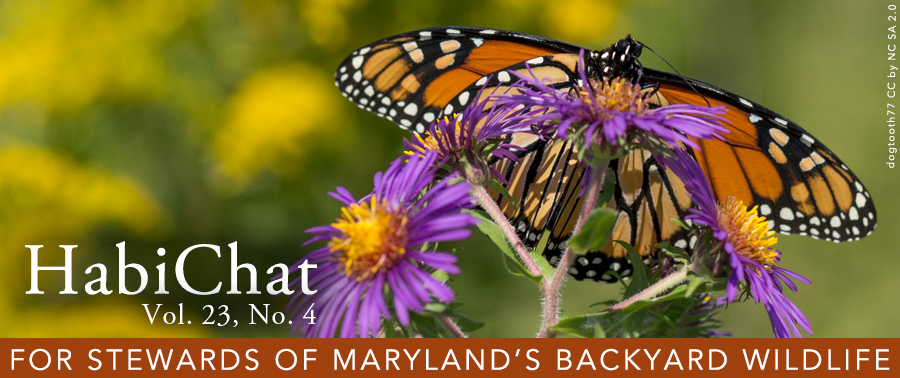
|
|
|
|
Happy Fall!
Fall is my favorite time of year. I love the sights and smells as the summer fades, and it is a great time to be out in the garden. Currently, many animals are in the midst of migration, and we are experiencing some record-breaking dragonfly migration swarms this year! As fall unfolds, here are a few things to consider:
1. Skip the fall clean-up to help local wildlife
2. Consider sowing seeds
3. Fuel fall migrants
In addition, last year’s rainy summer, coupled with this year’s drought and other factors, have taken a toll on oaks in our region. The University of Maryland Extension has put together an informative and concise article on Why Oak Trees are Declining. If you are in need of trees and shrubs for conservation or lumber, check out the Maryland State Tree Nursery which is accepting orders for Spring 2020.
In this issue, you can learn about a lovely native wildflower, the New England aster, as well as a native group of bees -- sweat bees -- that help to pollinate New England aster and its relatives. In addition, with advances in plant research, we are learning more about how cultivars affect our landscapes. Finally, learn about an up-and-coming invasive insect in Maryland, the spotted lanternfly, and how to report if you see one in the state.
Happy Habitats,
Kerry Wixted
|
|
|
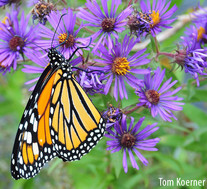
Native Plant Profile: New England Aster
With lilac purple rays and a bright yellow center, New England aster (Symphyotrichum novae-angliae) brings a pop of color to fall gardens. This tall, branching aster can reach heights up to six feet if allowed to grow to its full potential. Each stalk can have more than a dozen composite flowers at its tips, which bloom from August through October in Maryland.
Because of its late flowering, New England aster makes a great fall nectar source for a variety of insects, including migrating monarch butterflies.
|
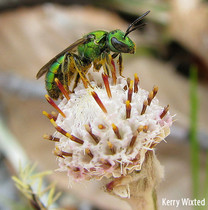
Native Animal Profile: Sweat Bees
Maryland is home to 437 species of bees, just over a quarter of which are members of the family Halictidae: sweat bees. Unlike other bee families, sweat bees are often generalists, visiting whatever flowers pique their interest. While this may seem like an advantage, sweat bees have to navigate different flowers to extract pollen and nectar, while also possessing the ability to metabolize pollen from multiple plant species. Both techniques are no easy feat for small and short-lived insects! Despite their generalist nature, sweat bees are important pollinators for many wildflowers and crops including sunflowers, stone fruits, apples and alfalfa.
|
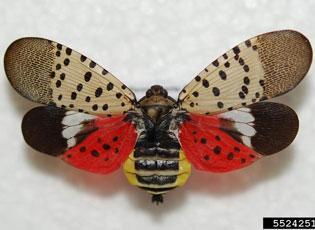
Seek and Destroy: the Spotted Lanternfly
The spotted lanternfly (Lycorma delicatula) isn’t actually a fly; rather it is a plant hopper native to China, India and Vietnam. This insect has now been detected in Connecticut, Delaware, Massachusetts, Maryland, New York, and Pennsylvania. The first Maryland record was found in 2018 in Cecil County. Subsequent records have been found in northeast Maryland this year.
Photo by Lawrence Barringer, Pennsylvania Department of Agriculture, Bugwood.org CC by 3.0.
|
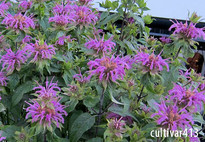
The Cultivar Question
While searching for the best plants to include with a garden, you have probably come across cultivars for sale. The use of native cultivars (aka nativars) has been growing as the popularity of native plants surges. Research examining nativars versus straight species is still a relatively new. In some studies, the species are compared by the number of animal visits while other studies examine nectar and pollen content.
|
|
|
|
|
|
Wild Acres is a voluntary program that encourages residents to create backyard wildlife habitat. For more winter tips and tricks, check out the HabiChat archives.
|
|
Home News Licenses Photo Contest Nursery Park Reservations Store
|
|
|